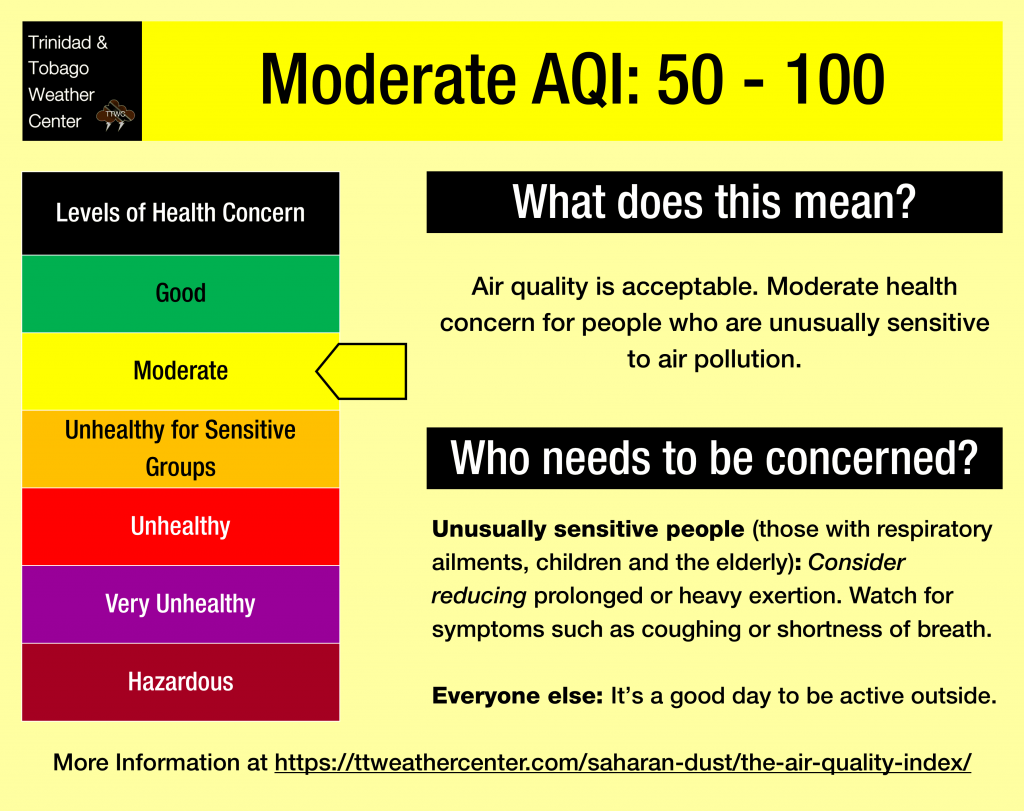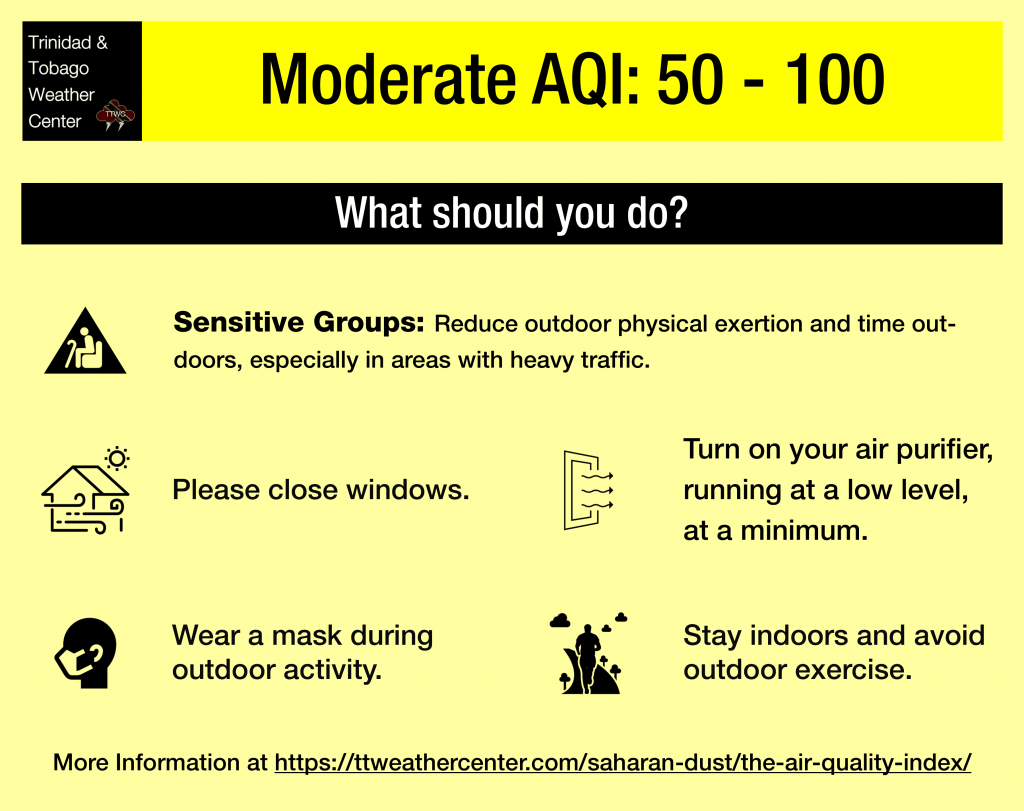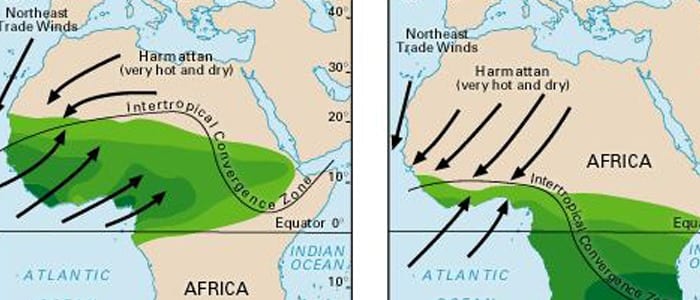A surge of Saharan Dust has arrived across Trinidad and Tobago, with peak concentrations ongoing through the next 72 hours. Elevated concentrations are forecast to linger across the Lesser Antilles, inclusive of Trinidad and Tobago, through mid-week next week.
What you need to know
— Saharan Dust Surges: A moderate to high concentration surge of Saharan Dust is present across Trinidad and Tobago, with dust levels remaining high into the weekend. Some improvement is forecast by the middle of next week.
— Impacts: Through the next seven to ten days, air quality levels across Trinidad and Tobago are forecast to remain near moderate, occasionally dipping to levels that are unhealthy for sensitive groups during high-traffic periods as well as in the vicinity of bushfires. In larger or more smoke-producing bushfires, air quality may be further reduced. By next Wednesday, air quality levels may occasionally return to good.
— What Should You Do: Sensitive groups may need to take the necessary precautions, particularly during high-traffic periods and in the vicinity of bushfires.
Current AQI Levels Across T&T

Based on information from official air quality monitoring stations from the Environmental Management Agency (EMA), San Fernando and Point Lisas are reporting moderate air quality levels. The stations located at Signal Hill, Tobago, as well as Arima and Beetham, Trinidad, are not reporting data.
These measurements are based on PM2.5 (particulates the size of 2.5 micrometers and smaller, usually associated with increases in Saharan Dust, vehicle exhaust, and smoke) and PM10 particulates.
Over the last 24 hours, visibility remained unaffected by Saharan Dust and smoke at the A.N.R. Robinson International Airport at Crown Point, Tobago while at the Piarco International Airport, visibility dropped to eight kilometers.
Saharan Dust Forecast

Ongoing Surge: Through April 12th, 2023

Saharan Dust levels are set to remain at elevated levels through April 8th, 2023 with a gradual decline by next week. Concentrations are forecast to diminish by April 13th, 2023, with mild Saharan Dust remaining present.
Through the next seven to ten days, air quality levels across Trinidad and Tobago are forecast to remain near moderate, occasionally dipping to levels that are unhealthy for sensitive groups during high-traffic periods as well as in the vicinity of bushfires. In larger or more smoke-producing bushfires, air quality may be further reduced. By next Wednesday, air quality levels may occasionally return to good.
What does this mean for you?


The air quality is forecast to be lowered primarily during high traffic periods, particularly between 6:00 AM and 9:00 AM and again from 3:00 PM through 6:30 PM, as well as during times of blowing smoke and dust from bushfires.
The surges of dust during this time of year are due to the Harmattan, a season in the West African subcontinent that occurs between the end of November and the middle of March. During this season, a predominant northeasterly trade wind (dubbed the Harmattan Winds) blows from the Sahara Desert over Western Africa into the Gulf of Guinea.

During this period, a ridge of high pressure stays over the central Sahara Desert, and the Intertropical Convergence Zone (ITCZ) remains over the Gulf of Guinea. The Harmattan wind accelerates when it blows across the mountain massifs of Northwest Africa. If its speed is high enough and it blows over dust source regions, it lifts the dust and disperses it.
Dust that makes it into the upper levels of the atmosphere can then get transported across the Atlantic Ocean and affect the Eastern Caribbean. These Saharan Dust outbreaks tend to be milder in the Eastern Caribbean than the dust outbreaks associated with West African thunderstorms driving dust into the upper atmosphere from April through November.











